Turning off bustling Jonker Walk in the heart of historic Melaka (or Malacca), the noise and crowds are quickly left behind. Just one block away, the street was deserted. It was hard to believe that we were in the same town. Keeping close to the walls to seek the shade, we wandered slowly along this silent row of buildings. Derelict and shuttered houses were interspersed with gorgeous mansions, beautifully preserved.
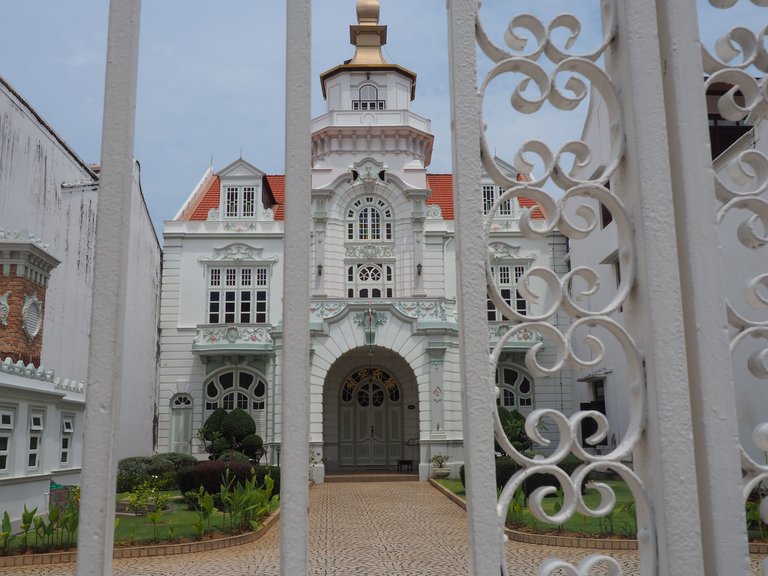
Some buildings had been carefully restored and turned into hotels and museums, but many others sat empty, behind locked wrought iron gates, gardens overgrown and paint peeling,
From time to time a car would cruise slowly down the street, bypassing the jammed Jonker Walk, but aside from that we were the only visible signs of life in Heeren Street.
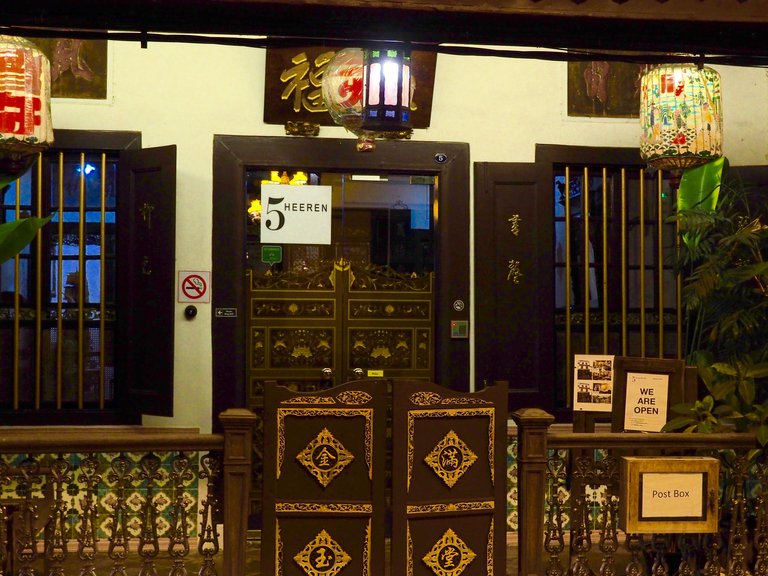
The street names here are a reminder of the Dutch presence in Melaka. 'Heeren' coming from the Dutch word for ‘gentlemen’, while 'jonker' – well, the explanation I heard is that it comes from the Dutch words for ‘young’ and ‘lord’.
The people who lived here were from the wealthy Chinese straits families, also known as Baba Nyonyas (baba for the males and nyonya for the females) or Peranakan. They are a distinct culture formed from the intermarriage between immigrating Chinese males and local females, a culture blending Malay and Chinese elements, with some Thai and British thrown in. But today this culture is dying out.
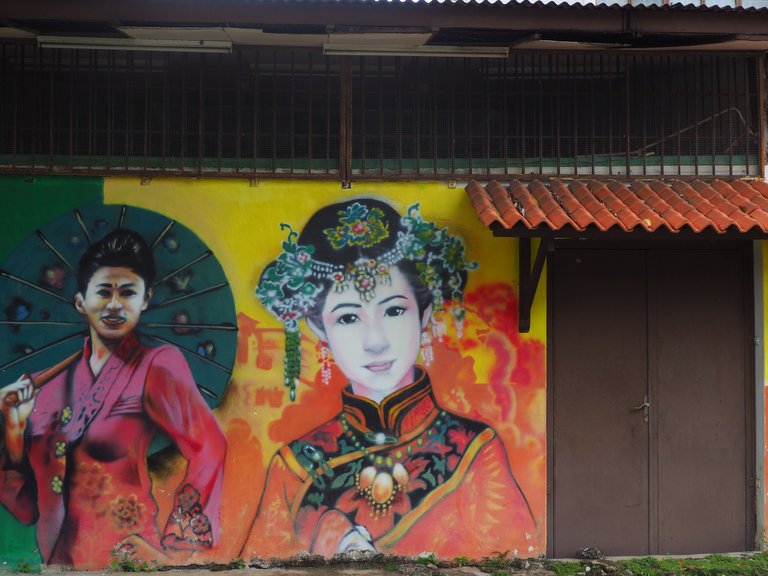
The lives of the Baba Nyonyas
Stepping off Heeren Street into the Baba Nyonya house, which is now a museum dedicated to the lives and culture of these people, you enter into a different world. A tall, shady and elegant entrance hall, with beautiful wood carved screens and furniture, an intricately patterned tiled floor, black and white family portraits on the wall going back generations.
It gives a sense of a family with understated pride in their traditions and culture. The house stretches back further than seems apparent from the street, opening up into a sunny kitchen area, the heart of the family in a culture that put value on time and effort in preparing food, and which now is renowned for its cuisine.
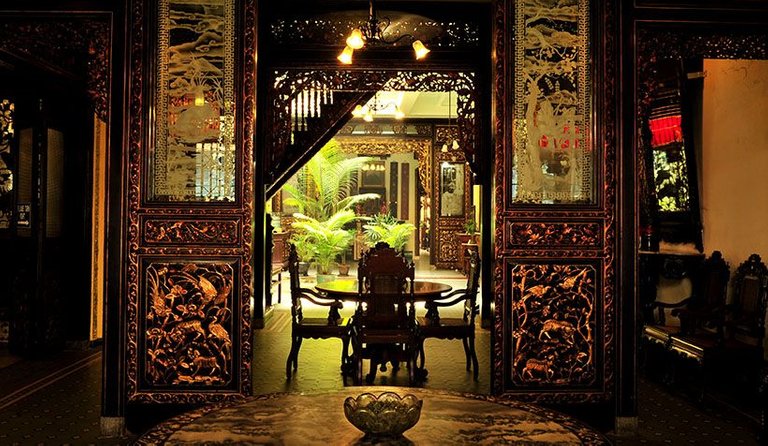
Seeing this house it is all the more sad to see the abandoned, decaying houses on Heeren Street, which presumably in their day were similarly elegant and welcoming.
It seems particularly sad when you consider how hard the original immigrants had worked to make their lives in this country, and when you consider how important ancestors are in the Chinese tradition. Ancestor worship is an important part of Baba Nyonya culture and in this context it is tragic to see the homes that the first generations proudly built, imagining their descendants living in them, now left to go to ruin.
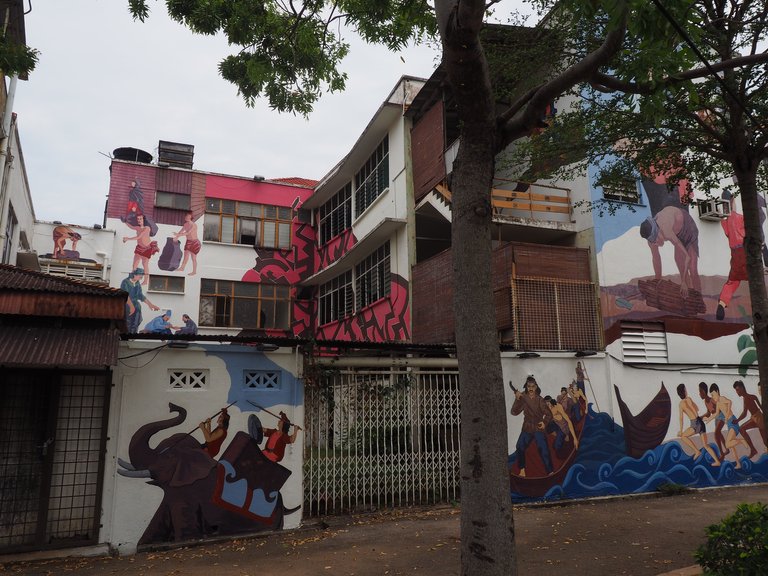
The manager of the Baba Nyonya house is a descendent of the family. He complains that the government is doing nothing to preserve the living culture of the Baba Nyonyas. He says their efforts go as far as putting some Baba Nyonyas on a float once a year, dressed up in their traditional clothing, waving at the crowds, but that’s it.
From Babas to birds
Incredibly and quite shockingly to my mind, especially after seeing the beautiful Baba Nyonya house, it seems that some of these abandoned buildings were at one time used for swiftlet farming. Swiftlets are the birds that build nests out of their spittle, nests that are highly sought after to make the meal of birds’ nest soup, considered a delicacy in some parts, especially China.
Swiflets left to themselves breed in caves, so in an attempt to recreate those dark damp conditions, these old buildings were shuttered off from the sunlight and a light mist sprayed. Together with the mess and stink of bird droppings, these conditions over time destroyed the fabric of the structure. What a come down for such beautiful buildings.
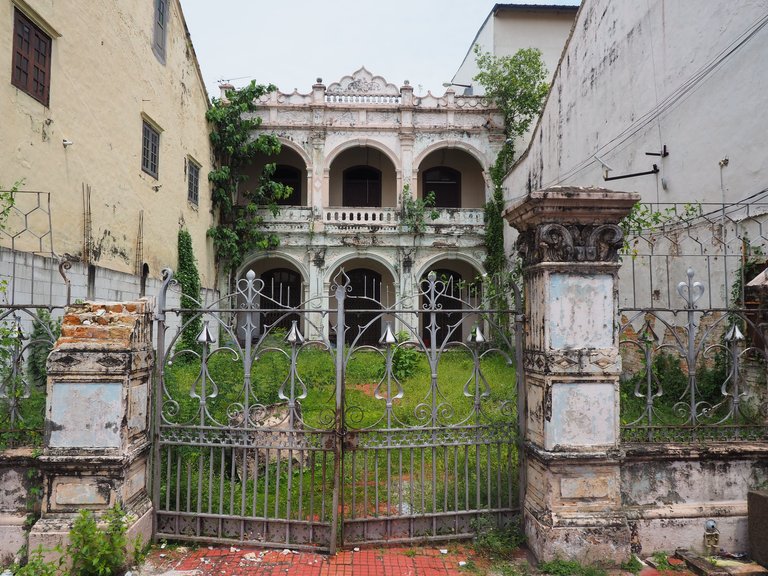
The practice has now been made illegal in these buildings, and as far as I could tell there are no swiftlet farms left on Heeren Street.
The details tell a life
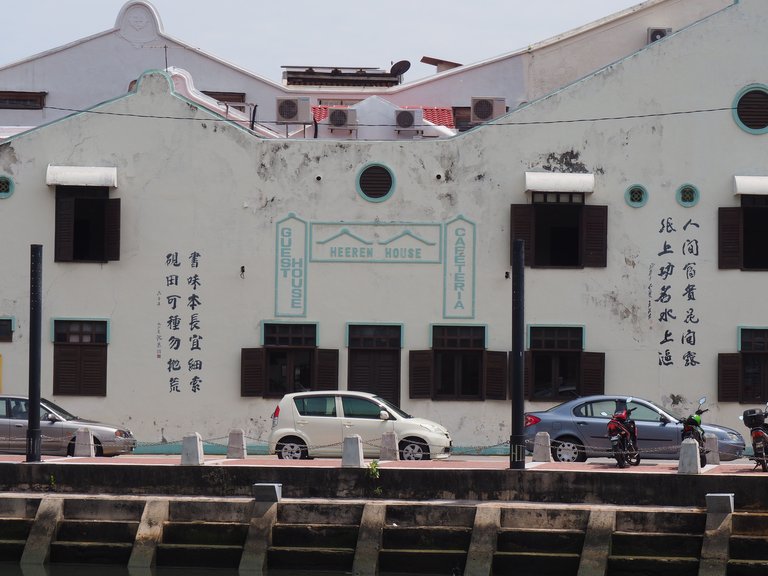
The photograph above, taken from the side of Heeren House, gives you a sense of how far back the buildings stretch. They were taxed on width, hence took this long narrow form.
Looking up at the buildings in the photograph above I noticed one striking detail.
Look at the top of the gables – see how they have that dome shaped area at the peak? It turns out that this is a practice derived from feng shui. The shape represents one of the five feng shui elements, in this case, wood.
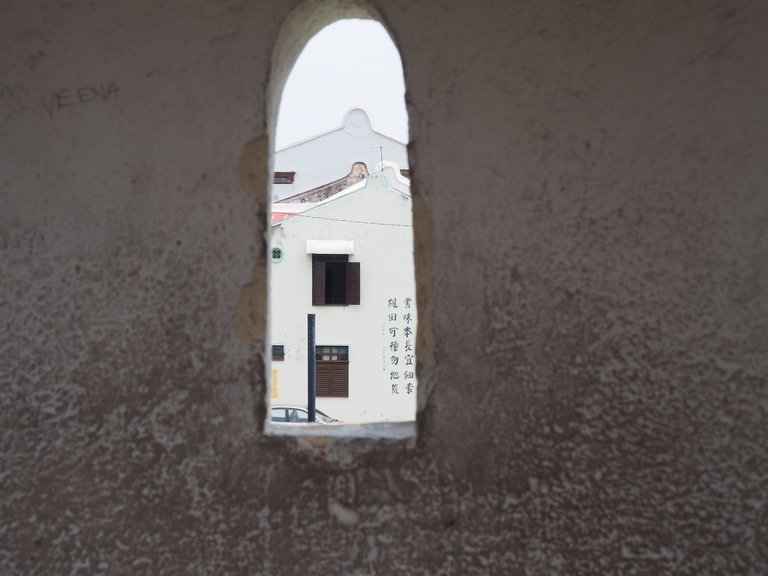
When I looked into this a bit deeper I found out that wood is an element that ‘counteracts’ earth, and is ‘fed’ by water (I am not sure if that is the correct terminology).
I found this fascinating and a real insight into the minds of these immigrants. You can imagine them arriving in a foreign land, wanting to put down their own roots in this strange earth, envisaging making their living from the water as merchants perhaps. Choosing the element of wood to finish their houses indicates their desire to counteract the foreign earth, to make it their own, and an understanding of their reliance on the sea for their livelihoods.
In fact these houses used to back onto the sea. The back of the house would be on stilts so goods could be hauled up from boats directly into the house. Now this whole area behind the houses has been filled in, running maybe a mile or so to the shore, with modern hotels and administrative buildings constructed on it, so the original design of these houses is not apparent.
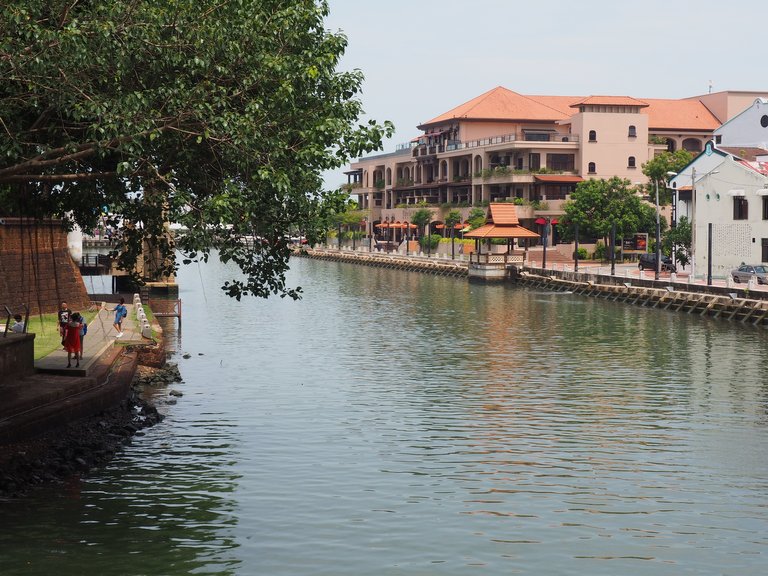
Wood also represents new beginnings, ancestors and family, as well as new projects, bold actions, planning and competition, all things that would be on the minds of these immigrants as they set out to make a successful go of their lives.
Such a little detail and yet it can reveal so much about how these people might have been feeling as they built up their lives in this country.
Meeting Mr Universe
Turning off Heeren Street, our minds filled with images from the dying Baba Nyonya culture, we made our way back to the noise and crowds of Jonker Walk. Partway along is a little park that we had not spotted before so we ducked inside. This is what greeted us.

Muscles rippling, arms held aloft, this larger than life bronze torso dominates the small park. It’s so incongruous that it attracts tourist attention. It was obviously built to impress, but it’s hard not to laugh at the sight of its out of this world proportions.
This is Datuk Wira (an honorary title) Dr Gan Boon Leong, a former Mr Universe and weightlifting champion. Turns out he became a prominent politician after he retired from weightlifting, and in fact was responsible for developing the night market in Jonker Walk.
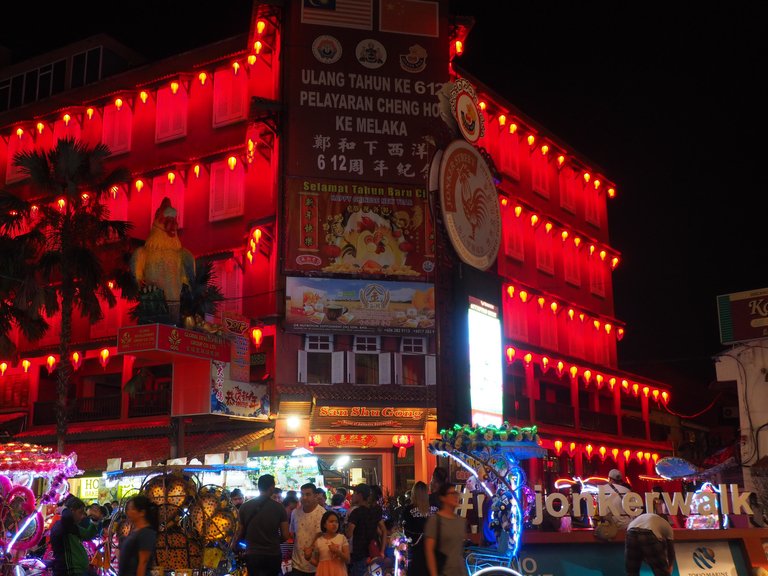
Now I must admit that I thought that the night market, often referred to as ‘the famous night market’, was something that had been around quite a while, something part of the fabric of Melaka. But learning about Dr Gan I realised that the market was only started, on his initiative, in 2000, as a means to attract tourists. Walking down the street it’s obvious that the vast majority of the shops that do business here are aimed at tourists, and the stalls that set up at night are similarly seeking the tourist trade. Fair enough, people need to make a living and the market seems to have been successful in that way.
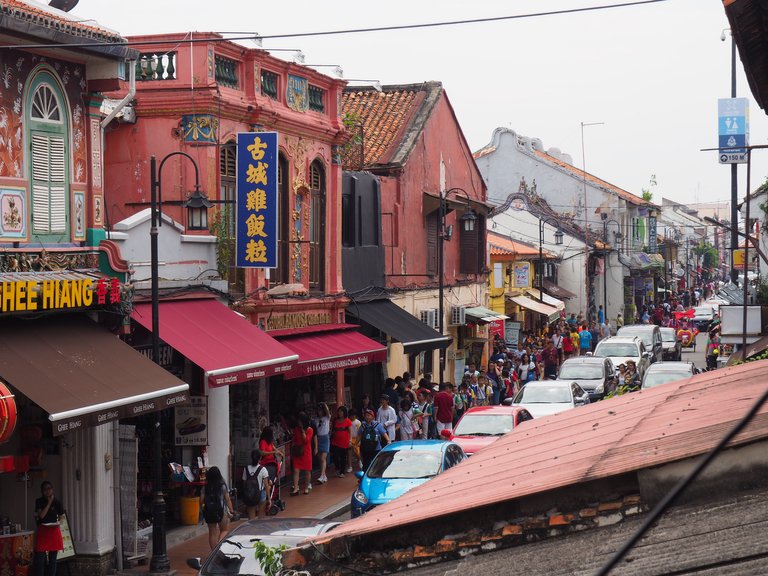
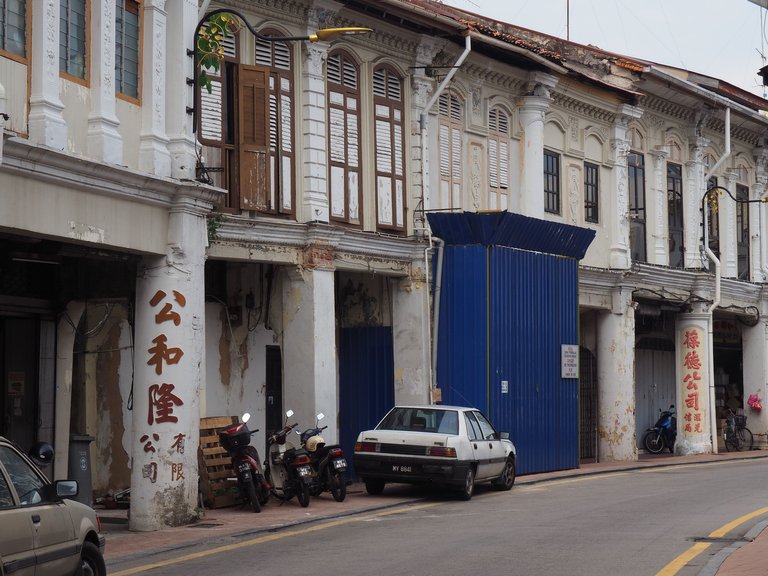
But thinking back to the deserted, in many ways beautiful but also sad, Heeren Street, I couldn’t help but wonder about Dr Gan’s approach.
Jonker Walk, it seems, used to be full of local residents, many of them craftspeople who lived above their shops. Many of these people were unable to afford the high rents that came about as a result of the promotion of Jonker Walk as a commercial tourist attraction, and so moved out.
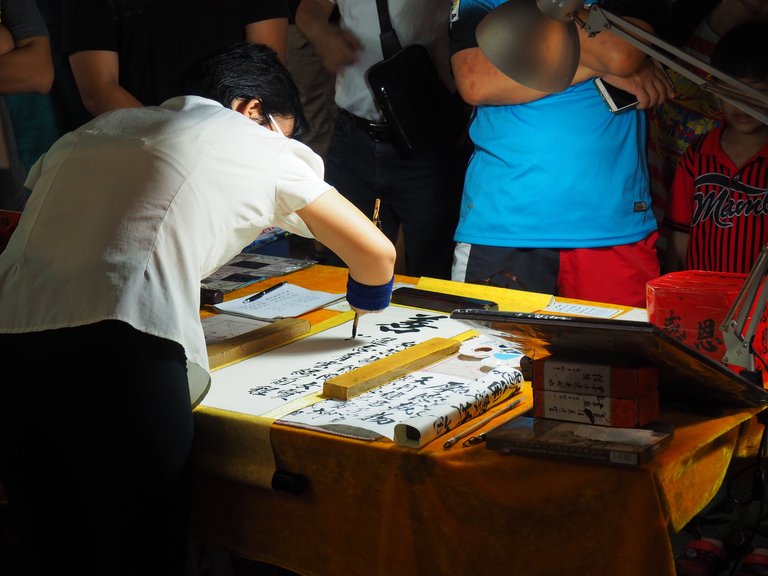
The buildings on Jonker Walk, just as beautiful as those on Heeren Street, get lost amidst the crush of the crowd of tourists, the neon signs, the banners and lights strung across the street. In its own way, and despite the crowds, Jonker Walk is just as much a tragic situation as Heeren Street and the Baba Nyonyas.
By the way, I later found out that this is one of FOUR statues of Dr Gan in the town. Of course I don’t deny his achievements at least as a weightlifter, but a discreet, or non-discreet if you must, statue outside the gym he still owns would be sufficient, if statues are needed, no? I should also say that I heard that Dr Gan is very friendly and if he catches you admiring one of his statues he may well invite you for lunch. I note this to say that of course I do not know him and am not familiar with the ins and outs of the debates there must have been around the creation of the Jonker night market. I am sure his intentions were good.
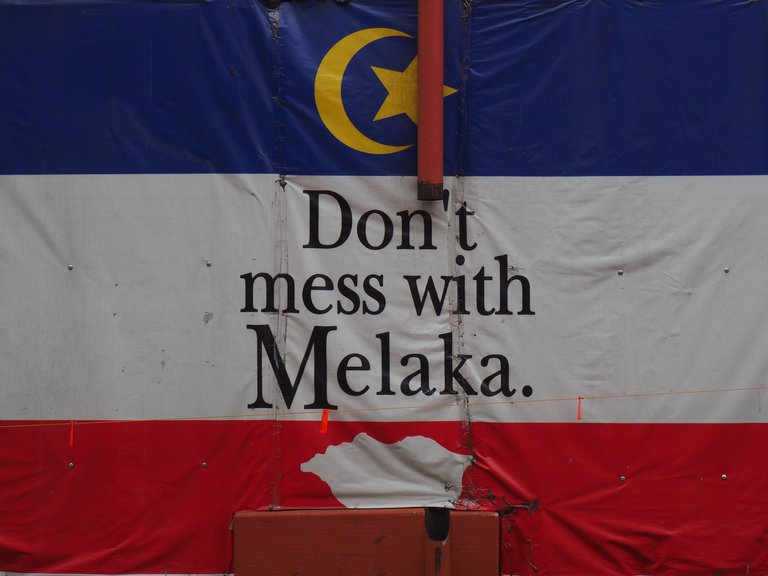
There is so much more to talk about in Melaka, the temples, the street art, the food, the river, the forts, and perhaps one day I will write about that. But thinking back to our visit the images that remained with me were the stark contrast between the quietly elegant Baba Nyonya culture, and that brash, muscle-bound torso in the park off Jonker Walk. I hope amidst it all that Melaka can find a way to treasure its amazing and beautiful heritage.
All photos by @freewheel, except where other source is given
Seems like this is a place worth exploring, with a lot of surprises and hidden gems to find!
I'm Dutch, and I would suspect 'Jonker' being formed from the words 'Jong' and 'Heer', which is you would pronounce them fast after each other, 'JongHeer' would end up in 'Jonker' indeed.
There's so much more to it than I managed to show! Thanks for helping out with the Dutch origins of the street names. Would I be right to think then that Jong Heer would be young man rather than young lord?
Congratulations, Your Post Has Been Added To The Steemit Worldmap!
Author link: http://steemitworldmap.com?author=freewheelPost link: http://steemitworldmap.com?post=feng-shui-and-mr-universe-in-melaka-malaysia-1516791075
Want to have your post on the map too?
Peace, Abundance, and Liberty Network (PALnet) Discord Channel. It's a completely public and open space to all members of the Steemit community who voluntarily choose to be there.Congratulations! This post has been upvoted from the communal account, @minnowsupport, by freewheel from the Minnow Support Project. It's a witness project run by aggroed, ausbitbank, teamsteem, theprophet0, someguy123, neoxian, followbtcnews, and netuoso. The goal is to help Steemit grow by supporting Minnows. Please find us at the
If you would like to delegate to the Minnow Support Project you can do so by clicking on the following links: 50SP, 100SP, 250SP, 500SP, 1000SP, 5000SP.
Be sure to leave at least 50SP undelegated on your account.
Heya, just swinging by to let you know you're being featured in our Daily Travel Digest!
Awesome, thanks! I will pop by to check out the other entries :)
This is excellent. Malacca is on the list for this year. I couldnt help but note the architecture was quite similar to Georgetown, but wherever I travel Im saddened by beautiful old buildings delapidated and empty.
Just also read your article on Ushuaia..very jealous. Ive been to Argie but ran out of time to get so far south.
A few more to read now, thanks, i had such a busy day lined up too lol
Take care, look forward to the hext installment !
It’s much the same style as George Town, yes! Hope you can get to Ushuaia one day - I was living in Bs As at the time so had no excuse not to get down there - and it’s absolutely worth it.
I really liked your comparison of Scarborough and Koh Samui. As a northern Brit now living in Malaysia I could make a similar comparison and I totally concur with your highly scientific conclusion :)
See you around!